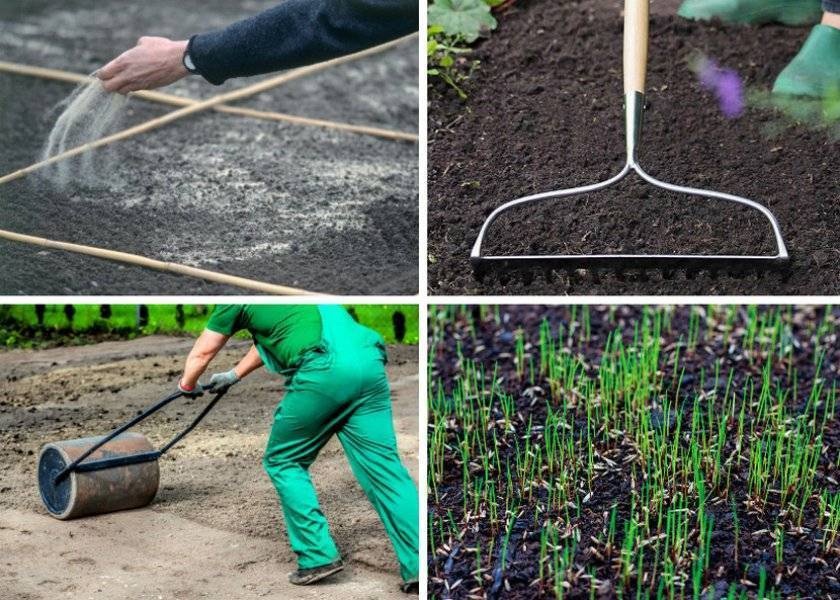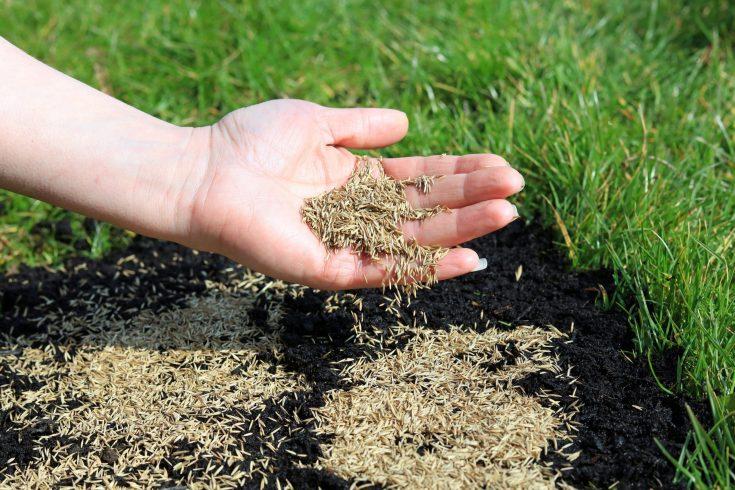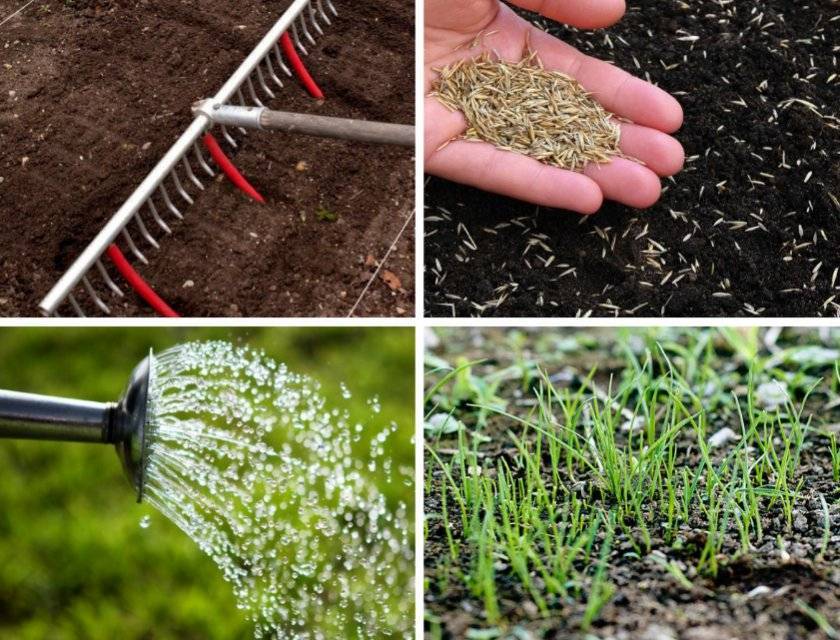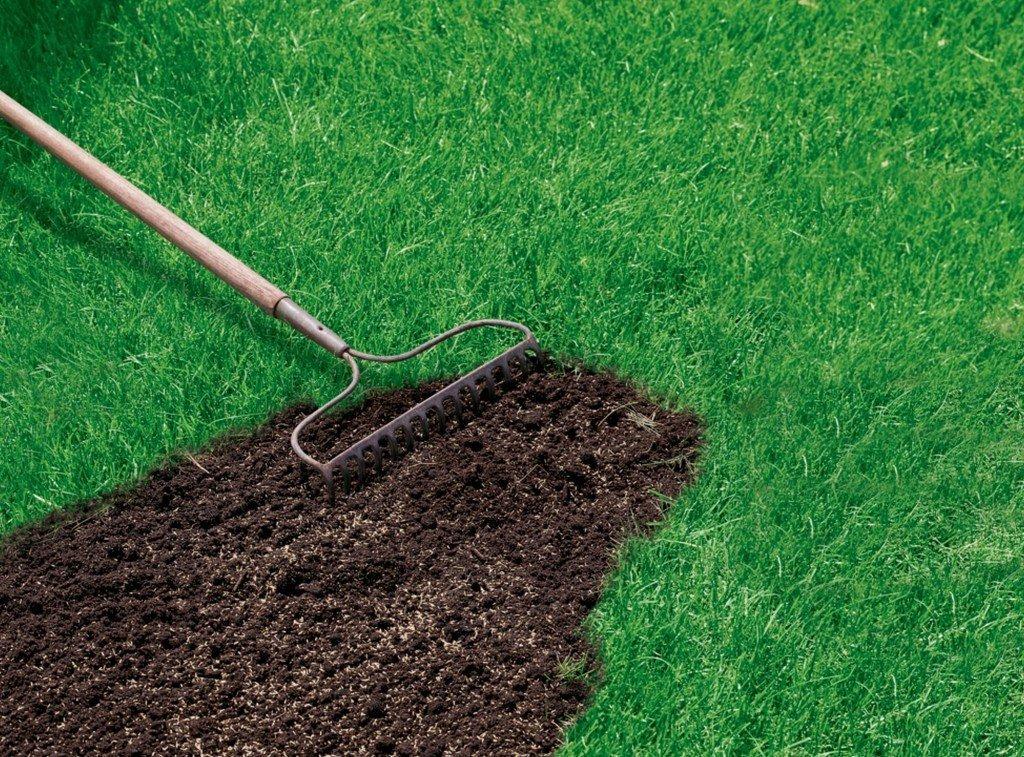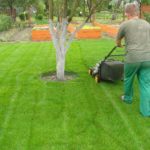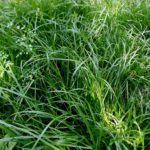Every summer resident dreams of a beautiful and neat lawn near his country house. Beginners in this matter will not even think about how to properly sow lawn grass with their own hands at their summer cottage. However, this process is characterized by a number of distinctive features. To get a beautiful and uniform result, you need to properly prepare the bed and provide the sprouts with quality care.
Lawn Grass Selection
Landscaping of the soil is carried out at the final stage of territory development.This must be done after completing all construction work, laying communications and arranging garden paths. In this case, you need to think through the site plan in advance and determine the location of the grass. Meadow and park lawns are more suitable for a private home. They are resistant to trampling and other mechanical factors.
To create such a lawn, perennial grasses are usually used. These include:
- meadow bluegrass;
- bentgrass;
- ryegrass;
- comb;
- fescue.
To achieve a uniform cover, it is recommended to plant a grass mixture. This helps avoid areas of different colors and textures. One type of grass should be taken as the basis, which should make up at least 80% of the seed. After which you should add the rest of the plants to it.
When choosing seeds, it is recommended to consider the following:
- Climatic factors. The ability of crops to withstand certain weather factors characteristic of the region should be taken into account. For example, bluegrass, bentgrass and fescue can withstand harsh winters well. This cannot be said about ryegrass, which also does not tolerate drought well.
- The degree of shading of the area. In sunny places you can plant bentgrass, bluegrass, and clover. It is also permissible to place ryegrass here. Fescue grows well in the shade.
- Soil moisture level. Undemanding plants include clover, red fescue, and bluegrass. Among the moisture-loving crops, it is worth highlighting bentgrass and sheep fescue.
- Seed producer. You need to buy seed only from trusted companies. These primarily include Dutch and Danish companies.
- Cost of seeds. A quality product cannot be cheap.Trying to save on seeds will provoke even greater expenses.
- Best before date. Many people forget about this nuance. However, expired material will not give the desired result.
It is recommended to buy lawn grass in specialized stores that have a reliable reputation and are highly rated.
Preparing the area
Lawn grasses require a lot of light. Therefore, they should be planted in a well-lit area. In the shade, the grass will begin to stretch and turn pale. As a result, the lawn will appear unkempt.
When growing grass, preference should be given to flat or elevated areas. At the same time, creating a lawn in a lowland is strictly prohibited. In spring and after precipitation, moisture stagnation is observed there. This can cause the roots to rot.
To prepare the area, it is recommended to do the following:
- Remove stones. First you need to clear the bed of stones. It is important that the lawn is level. In this case, even the smallest stones need to be removed.
- Eliminate weeds. They need to be radically removed. At the same time, it is important to get rid of the roots. Otherwise, the grass will grow right through the lawn and removing it will be very problematic.
- Reduce soil acidity. Lawn grasses prefer neutral soil, the pH of which is 6.5-7. Dolomite flour must be added to acidic soil, following the instructions on the package.
- Add fertilizer. Before sowing grass, you need to add a set of fertilizers to the soil. Per 1 square meter you need to add 3 tablespoons of ammonium nitrate and double superphosphate, as well as 1.5 tablespoons of potassium sulfate. Nutrients can be scattered over the surface of the area and then dug up. Humus must be added to heavy clay soil.Lawn grasses need loose and fertile soil.
- Dig up the area. Before laying the lawn, you need to dig the bed to a depth of 30 centimeters. At the same time, it is important to carefully break up lumps of earth and level the soil with a rake.
- Level the area. There should be no holes or bumps on the surface. Otherwise, moisture will begin to stagnate in the depressions, and on the hills it will not be possible to mow the grass.
- Compact the soil. Many plants develop only in loose soil. However, this does not apply to the lawn. An ideal lawn can only be created in very dense soil. To do this, it needs to be rolled with a special hand roller, the mass of which is 50-100 kilograms.
- Mark the bed. After preparing the site, you need to outline the contours of the lawn. This is easiest to do if the bed has the correct shape. However, it is important to consider that these lawns may appear artificial. A more spectacular option would be an irregularly shaped lawn, which has smooth curves. It is recommended to use pegs for marking. They need to be driven firmly into the ground and the rope pulled tight.
Landing instructions
Most often, lawns are created using cereal crops. For this, as a rule, meadow and common bluegrass, red and sheep fescue, perennial and multi-flowered ryegrass and much more are used.
It is recommended to plant a lawn throughout the warm season. This should be done from the end of April to the end of September. However, spring and summer are still considered the best options. Thanks to this, it will be possible to obtain the most decorative result.
If you plan to plant the lawn manually, it is recommended to combine the seeds with sand in a 1:1 ratio. This makes it easier to scatter them around the area. It is recommended to use 30-60 grams of lawn seeds per 1 square meter. Saving in this case is not recommended. If you plant less than normal, your lawn will have bald spots. If you use an excessive amount of seed material, the decorative appearance of the lawn will not improve in any way.
When planting by hand, the seeds must be evenly distributed over the surface of the soil and carefully buried using a rake. After this, the crops should be watered thoroughly. It is recommended to moisten the lawn every day until the sprouts appear. In hot weather, this should be done twice a day - morning and evening. After this, watering should be reduced to once a week.
Cost of laying a lawn
It is recommended to buy seeds at the rate of 30-60 grams per 1 square meter. The packaging usually indicates the consumption of seed material and contains brief instructions. Seeds are sold in paper or plastic bags of 1, 3, 5 or more kilograms. In this case, the approximate cost of 1 kilogram depends on the mixture and can be as follows:
- decorative – 400-600 rubles;
- sports – 200-500 rubles;
- garden - 200-250 rubles;
- meadow - 300-500 rubles.
Recommendations for beginners
To get a beautiful and neat lawn, you need to adhere to the following recommendations:
- Water the lawn frequently with warm water. Any growing grass requires moist soil. Therefore, it is recommended to moisten the soil at least every 3 days. If possible, it is worth organizing an irrigation system.If this fails, you should use a regular hose. In this case, it is recommended to put a sprinkler on it. Watering the lawn with a watering can is very problematic. This requires quite a lot of water. In addition, there is a risk of trampling the grass.
- Weed the plantings. Even with careful preparation of the bed, some of the roots will still remain in the soil. Gradually, weeds will begin to break through, worsening the decorative properties of the lawn. This is why it is so important to systematically weed the lawn – especially at the beginning of its growth. After lawn grasses grow, their roots will be able to partially suppress the development of weeds.
- Regularly cut the grass. It is recommended to do this for the first time when the height of the plants is 10-15 centimeters. In this case, the grass should be shortened by approximately half. After this, it is recommended to cut or mow the lawn once a week. As a last resort, this can be done at intervals of 10 days. In this case, the lawn will seem neat. In this case, the grass will be short and will not fade in the sun.
- Fertilize the soil periodically. Like all other crops, lawn grass requires fertilizing. Organic fertilizers are best suited for this purpose. However, there are also special mixtures for lawns that need to be applied simultaneously with watering. This needs to be done once a month. It is not recommended to carry out this procedure more often. If you overfeed the grass, it will begin to grow unevenly.
Any lawn requires such conditions, with the exception of meadow lawns. It needs less weeding, fertilizing and cutting. At the same time, watering the meadow lawn is required in exactly the same way.
Common mistakes
Growing a beautiful and neat lawn is considered quite a difficult task.At the same time, novice gardeners usually make the following mistakes:
- Wrong choice of seed material. Often people neglect the importance of this issue by purchasing the wrong mixture. At the same time, they do not take into account the characteristic features of the relief, soil, and location of the lawn. Also, many beginners do not focus on climatic features. A mixture of herbs may have great properties, but it is simply not suitable for a particular area.
- Improper site preparation. This primarily concerns leveling the beds. It is important to perform all actions in a specific sequence. After leveling the site for the first time, it must be left for some time. After this, you need to carry out the procedure again. This will help get rid of possible unevenness after the soil settles.
- Lack of drainage. Excessive amounts of moisture cause the same harm to lawn grass as its deficiency. This is why it is so important to pay attention to the composition of the soil. If the soil is dominated by clay or black soil, it is necessary to ensure free flow of water. Otherwise, you will have to constantly fight with moss, bald spots and mold.
- Heterogeneous planting of lawn grass. There is absolutely no need to rush at this stage. It is better to spend a little more time planting than to fill the voids later.
Growing lawn grass is a complex process that requires certain conditions to be met. To get a good result, it is important to properly prepare the site and provide the plants with quality care.

